Conex
Find self employed driver jobs
A trade-only freight exchange platform for courier jobs in the UK and Europe, committed to establishing real-time connections between drivers and dispatchers.
The problem
Self employed drivers found it hard to keep track of new jobs and efficiently deliver loads. Load owners needed prior education to understand how to use the web platform to post jobs to ‘The Exchange’, the general experience was complex leading to a lack of engagement.
The challenge
How do we simplify the process of the driver’s next job in the app? How do we address key priorities in the web platform to simplify a better experience? How can we combine common workflows of a courier’s business needs within one place?
Driver’s
next job
How do we simplify this process for the app?
We needed to map out and understand what the driver’s routine for a job looked like and then design a workflow in the app to aid that process. The current driver app allowed the user to set their status but it didn’t alert the driver about their next job. We needed to introduce push notification and land them in the app on a map page so jobs, status and journeys were centralised in one place.
Flow
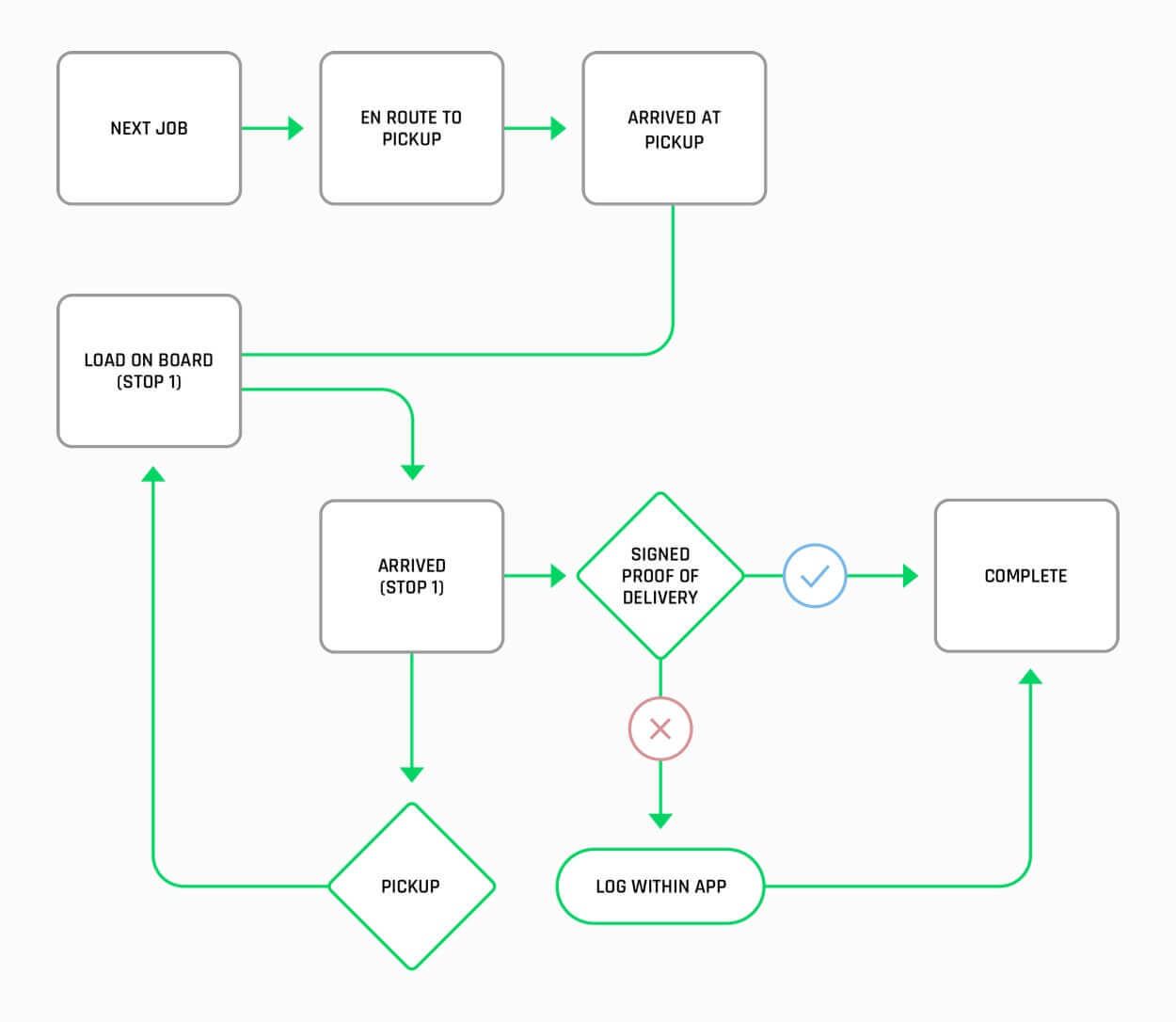
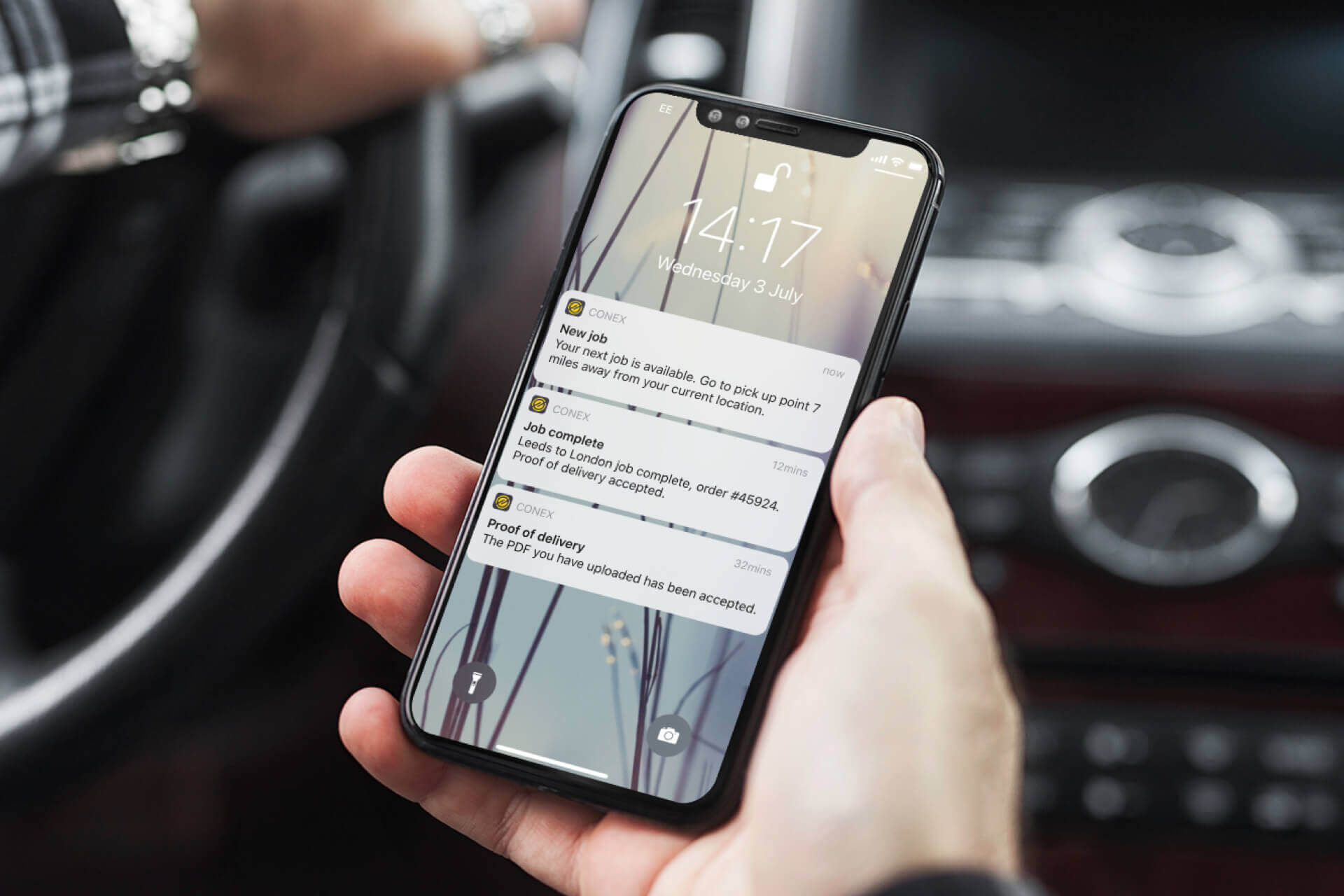
The journey
If a driver set their status to ‘I’m available’ the next job would appear automatically at the bottom of the map area highlighting to the driver how far away they were from starting their next job.
The current app had the downside of manually setting your status but the new app proposed doing that in the background – for instance it would geo fence the pick up point location and set your status to ‘Arrived at pick up’ once in that location, this was useful to load owners as they could track progress of delivery. Dispatchers could also monitor jobs in progress and empty vehicles.

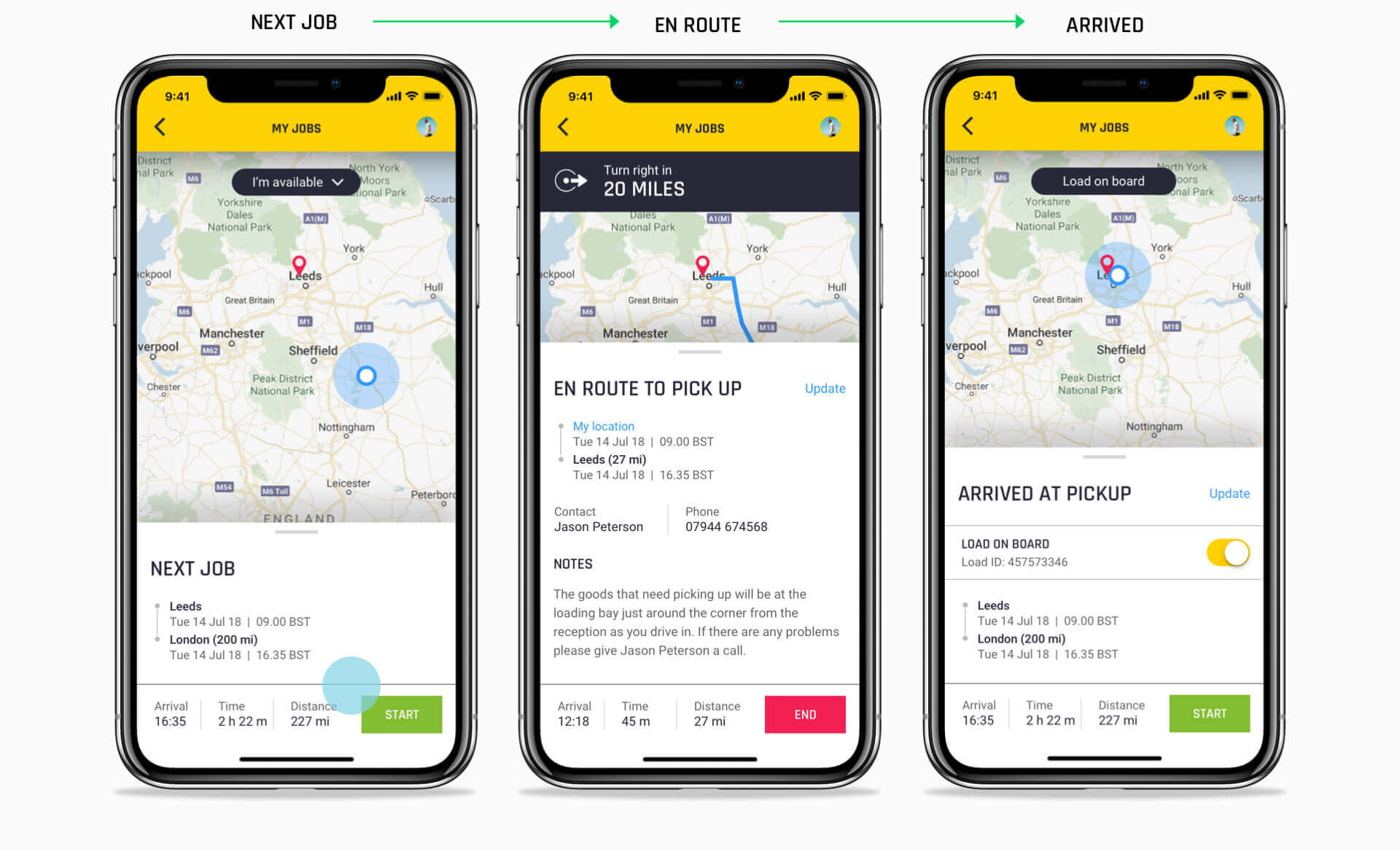
Proof of
delivery
One of the pain points for self employed drivers was managing paper work. Drivers would have to scan ‘proof of delivery’ and send an email with a matching invoice to get paid. This task needed to be actioned and recorded within the app so drivers could stay organised and send documents on the move.
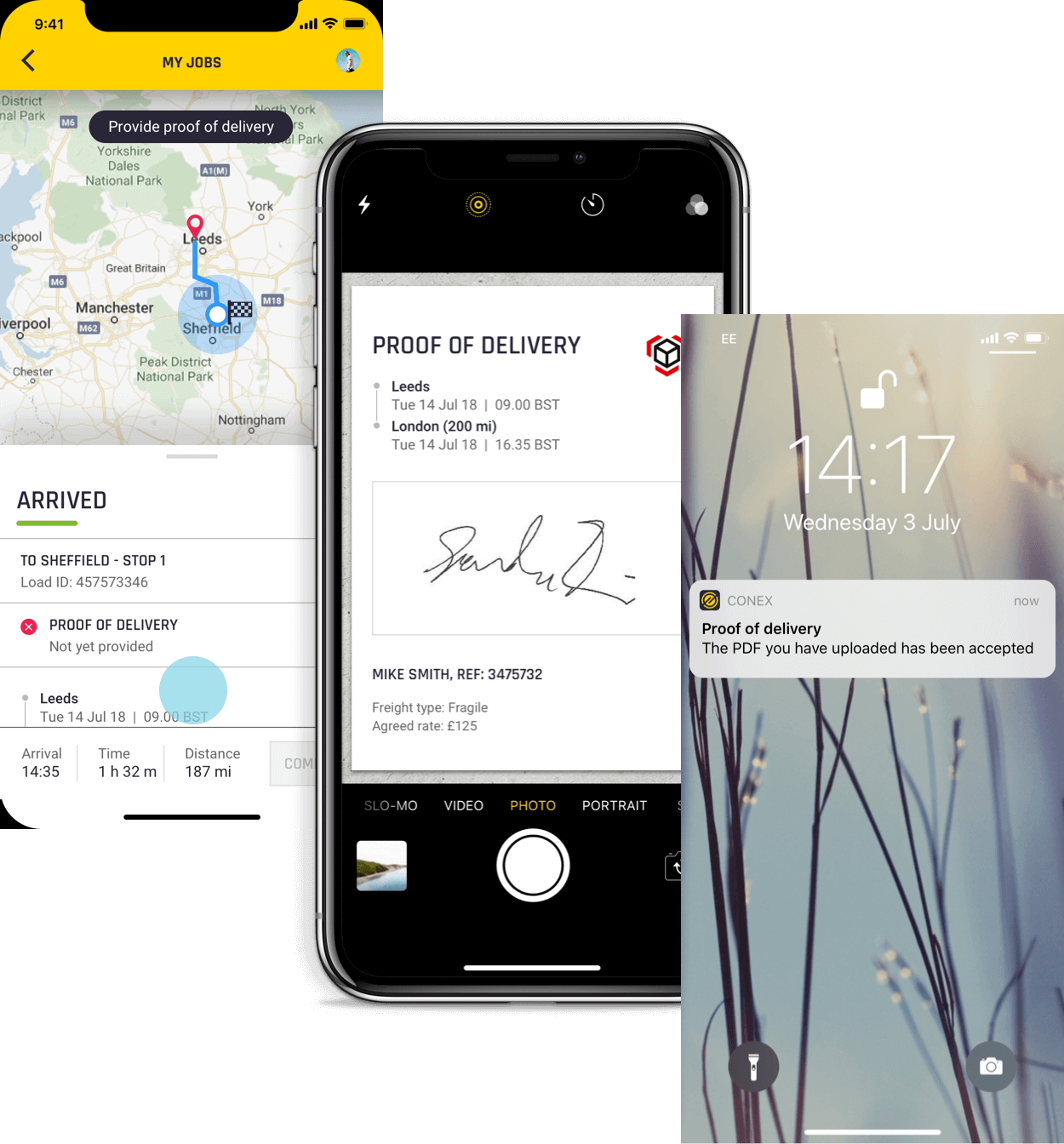
Virtual ID
On receipt of delivery, drivers needed to present their Virtual ID in the Apple Wallet so they could be checked and verified. This was a quick process that validated their company details with a time and date when the check was made.
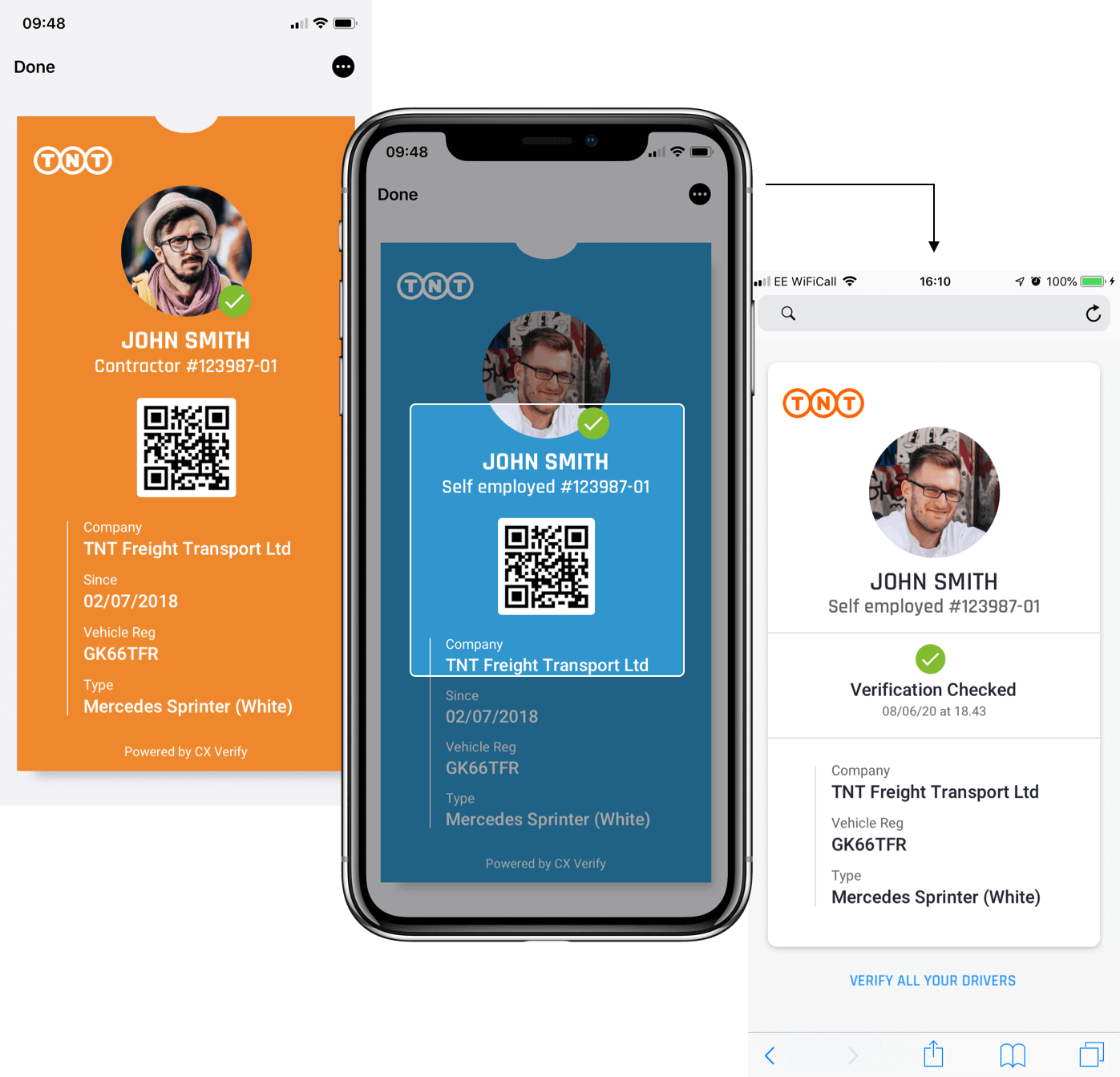
Finance
Pain points
Previously when receiving invoices and documents through ‘The Exchange’ it was difficult to manage as documents were found in different places and suppliers would provide information in different ways making it hard to match documents. Also disputes and queries were logged manually and an account manager needed to search for invoices quickly.
Solution
A Finance web app was created which outlined tasks that needed to be actioned between ‘Accounts payable’ and ‘Account receivable’. The user could see the status of jobs that may be awaiting documents for approval before making payment. An intuitive search and filter mechanism was introduced so account managers could find information quickly.

Matching documents
Proof of delivery was captured and received from the courier with an invoice so it could be matched with its order details to enable payment to be processed. If there were any disputes or queries, messages could be sent to the associated job between the driver and finance department.
All of these processes aligned workflows and communication in one place removing any form of manual task. The system also enabled Quickbooks integration and performance reporting.
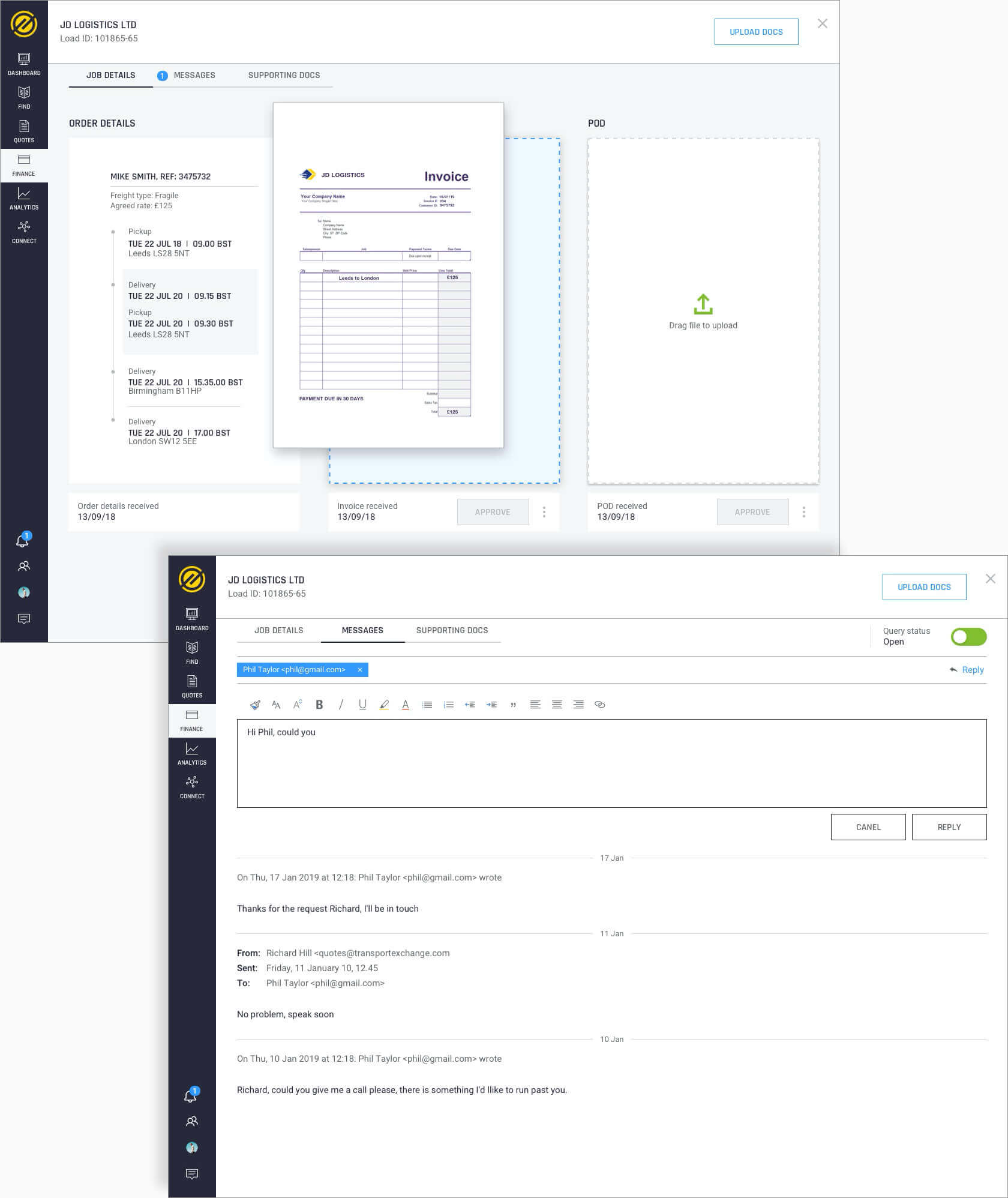
Find
Load owners need to find vehicles and drivers need to find work.
Load owners would post a job (to move goods) to the Exchange and look to find vehicles within a company or maybe contact a self employed driver for hire. Drivers would look for loads to quote on for their next job and this created purpose of ‘The Exchange’ which was a desktop web app.
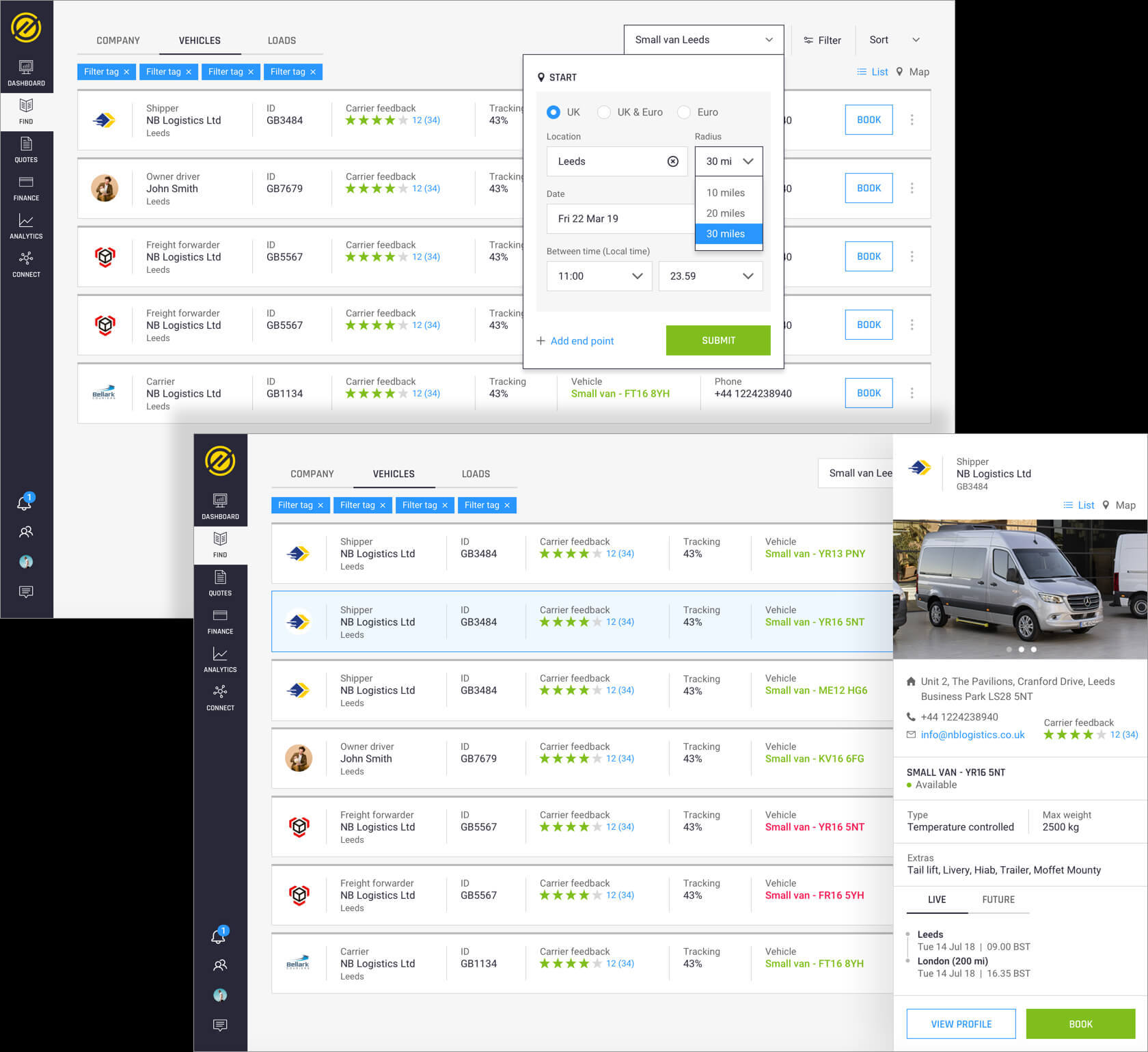
Design
system
Atoms, molecules and organisms
Journeys were discussed and iterated on with an ongoing design system, moving away from wireframes and using components straight from the library. Common functions and patterns started to be establish as the product developed.
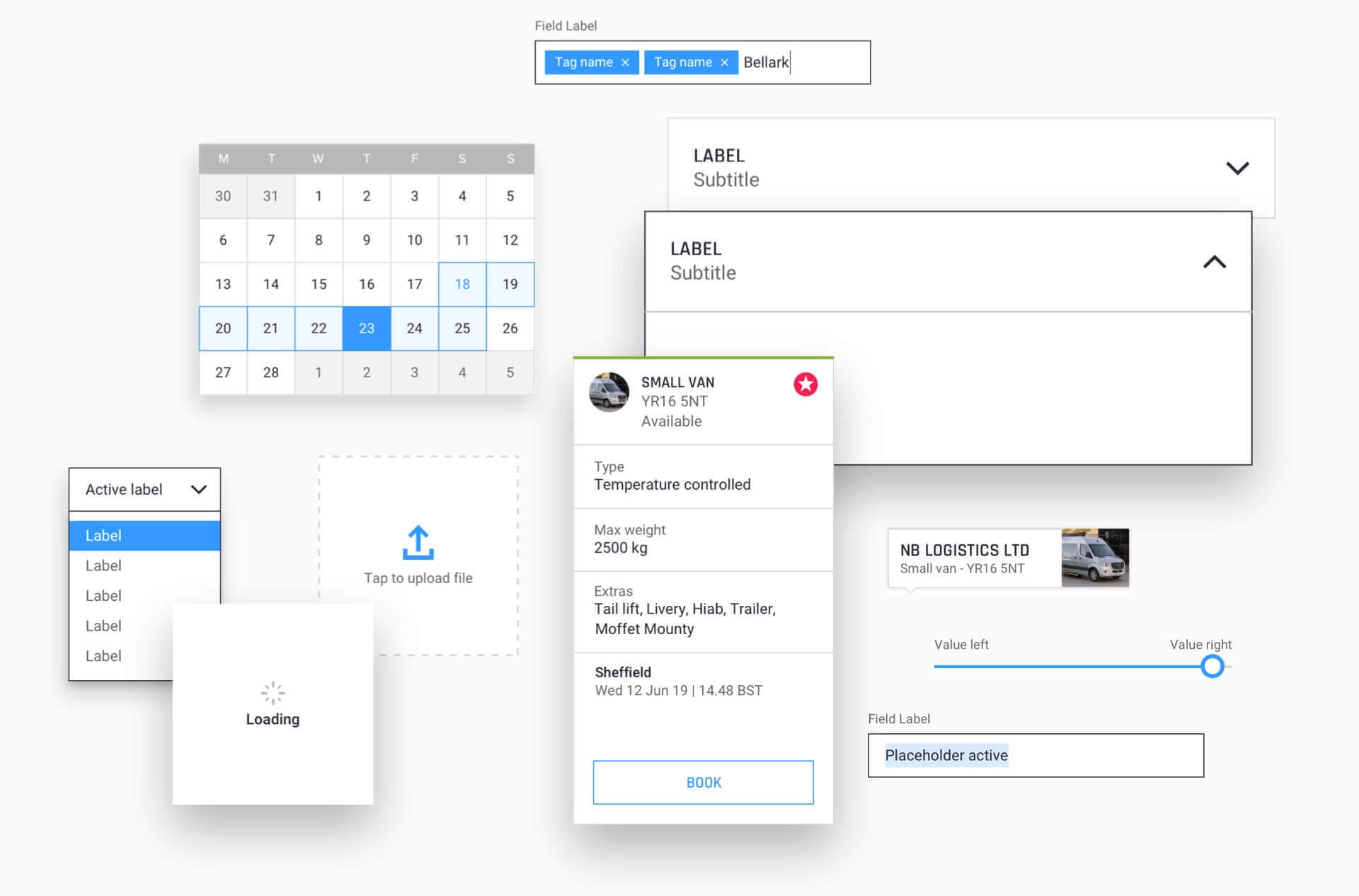
Workshops
Templates and pages
As more designers joined the process rules were formed around how pages were created, so we ran workshops with the team in the UK and Ukraine to articulate underlying content structure.
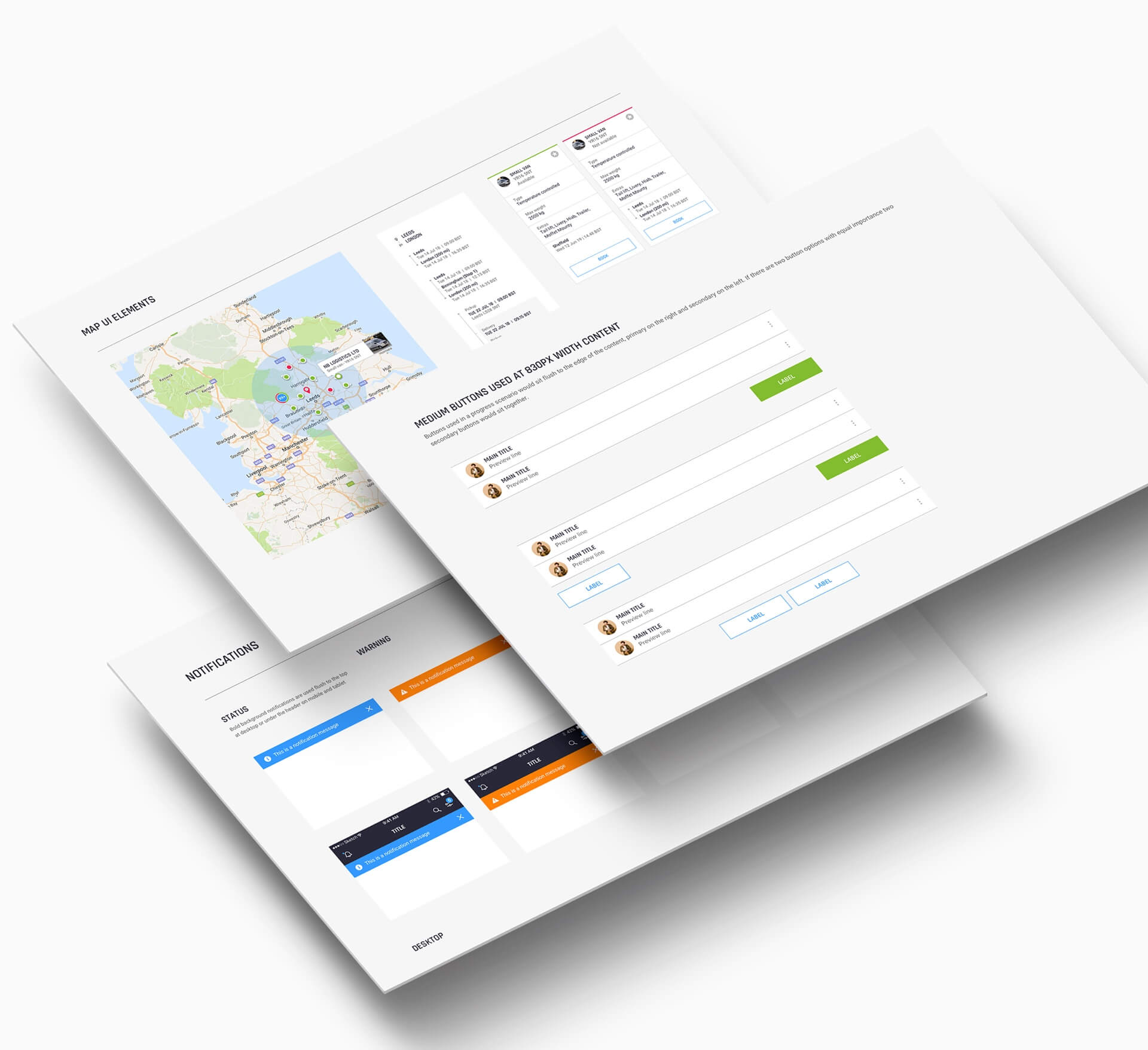
The result
What was achieved?
I worked closely with product owners to understand the strategic approach of how we could combine common workflows of a courier’s business needs. This included finding jobs / vehicles on ‘The Exchange’ with a new flow of ‘The drivers’s next job’ in the iOS app. The process of drivers being able to quote for jobs and finance departments being able to match received invoices with ‘Proof of delivery’.
These core sections resulted in a new improved experience for users with a complete architectural restructure of a web app that utilised a comprehensive UI design library, which I initially created – working with design, dev and product owners globally.
Richard really helped us improve our design and design processes across our product portfolio. He spent his time with us developing and implementing our design system, visual language and information architecture for the redesign of our products. He is very passionate about his work which helped him gain a deep understanding of what we do. Also, he really gets work done!
Working closely with the team he was able to work on multiple design tasks at once, getting hifi designs and prototypes together for user testing and development quickly and of high quality. I wouldn’t hesitate to recommend or employ Richard in the future!



